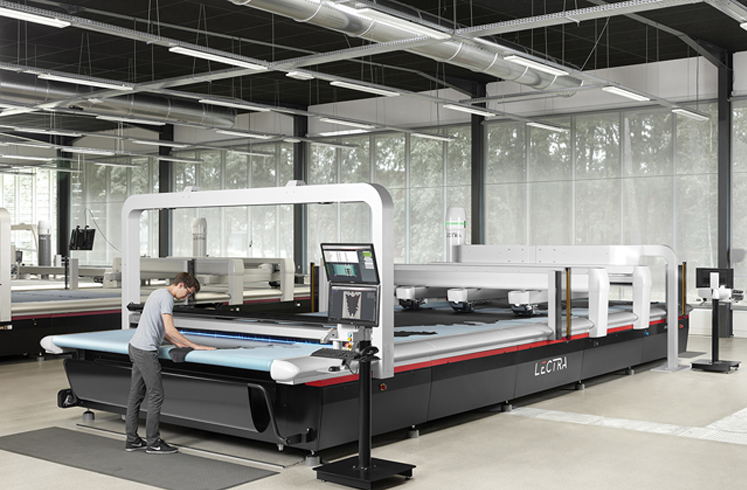Opening of the new headquarters of the KARL MAYER Group in Obertshausen in August 2021

The KARL MAYER Group’s corporate headquarters moved into a new, prestigious building on 23 August this year. The building with its ultra-modern architecture, together with a staff restaurant, forms the focal point of the new KARL MAYER Campus at the Obertshausen site. The building complex covers an area of 5,600 m². It is designed for 150 employees, invites people to exchange ideas and network, and stands for the further development of KARL MAYER. The innovative world market leader with the roots of a traditional family business is now a growing international group of companies with three strong brands – KARL MAYER, STOLL and KM.ON – and an extended focus on business areas outside the textile world. “We are looking forward to welcoming our international guests to a headquarters that, with its modern, transparent design and inspiring atmosphere, reflects the dynamics, cosmo-politanism and innovative strength of the KARL MAYER Group,” said its CFO Dr. Helmut Preßl.
Networking, agile working and more
In the light-flooded foyer, a large media wall provides information on the latest news, and a showroom is dedicated to the company and family history. An Innovation Hub provides space and opportunities for new ideas and developments together with customers from all over the world.
The office floors are already home to the working world of tomorrow. Office areas, meeting rooms and places of retreat can be changed according to the situation by modifiable furnishing and seating arrangements. Open entrances, glazed walls and areas that can be used in a variety of ways promote communication, “With our space and building concept, we want to promote a sense of togetherness and broaden horizons,” says Arno Gärtner, CEO of the KARL MAYER Group.
Sustainability in construction and operation
In addition to performance, the ecological footprint of the new building is right. Air-source heat pumps take care of the entire energy supply, economical, long-lasting LED technology reduces power consumption, and digitization means that work is paperless wherever legally possible. Recycled materials were used where practical and feasible. For example, the paving stones in the outdoor areas were already in use. Almost all roof surfaces are extensively greened, providing habitats for insects and retaining rainwater. In addition, all materials used meet the specifications for a healthy working climate, and all current legal requirements for thermal insulation are complied with.





